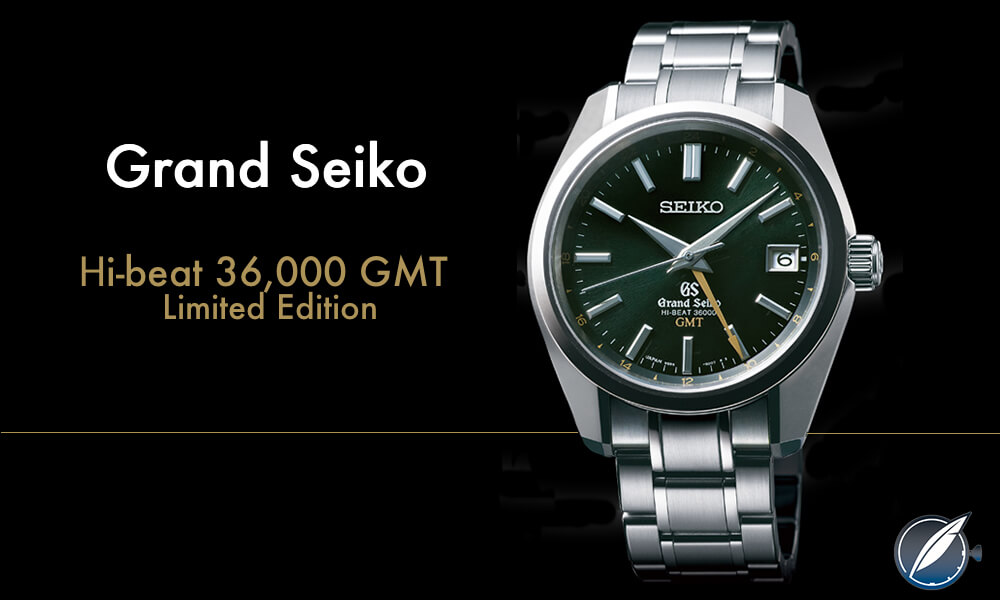
Grand Seiko Hi-Beat 36000 GMT
My journey toward appreciating Seiko began with my first trip to Japan in 2008 while researching the chapter on Kenji Shiohara for my book 12 Faces of Time. It was there that I learned that Seiko was producing ultra-luxurious, very finely finished timepieces. This took place where Shiohara worked in the Micro Artist department, which produced incredibly intricately finished pieces of high horology.
Seiko’s story is much more complicated than most people might think. This is a manufacturer that doesn’t follow trends, but has created a few of its own, capitalizing on various types of expertise and knowledge that were the mother of necessity for a manufacturer located so far away from the established centers of watchmaking in Europe.

The site of the original 1881 Seiko boutique at Tokyo’s Ginza is still owned by Seiko, but is a department store that also includes fine watches (both buildings, and have a look at the top of the building on the left)
Contrary to popular belief, Seiko’s history did not begin with the quartz watch in the 1970s, nor has it ended there. This Far Eastern giant has banked on innovation for more than 120 years (beginning with the Hattori family founding its own factory for pocket watches in 1892 after Kintaro Hattori opened his boutique on Tokyo’s famed Ginza in 1881) and now masters more types of watchmaking (mechanical quartz, solar, and Spring Drive) than any other company making timepieces.
However, the Grand Seiko is the most appealing line to connoisseurs of fine watchmaking.
Western perceptions
In 2010, as I was sitting in the annual press conference that Seiko holds at Baselworld, my ears perked up when I heard the Japanese brand’s representative announce that it would finally begin distributing Grand Seiko in other parts of the world. Up to that point, it had been a sort of insider timepiece that was only for sale within Asia, where it enjoyed an excellent reputation.
Quill & Pad co-founder Ian Skellern summed up a general feel of this perception very well when he recently said to me, “I rate the quality and fine finishing of the Grand Seiko as world-class and on par with fine Swiss watchmaking, but feel that it is unfortunately held back by the name ‘Seiko,’ which is strongly associated with mass-market watches.”
And that is the crux of the perception that westerners have regarding Seiko. Because this manufacture is capable of producing every part of a wristwatch – including every single movement component (even LIGA parts, which Seiko calls Mems, and springs) and uniquely even cases, crystals, and other habillage – it produces timepieces in every price class, even quartz- and solar-powered watches. Which means the consumer can buy a Seiko for a very reasonable couple hundred dollars.
Also because Grand Seiko and the unique Micro Artist products like the Credor Eichi are not available in the West (well, the Grand Seiko is now), it is the very reasonably priced, yet less “special” side of the brand that has stuck with most consumers in terms of image.
“Seiko is considered the main brand in contributing to almost crashing the Swiss watch industry in the 1980s because of its affordable quartz watches,” says Louis Nardin, editor-in-chief of the Swiss video channel The Watches TV. “Seiko had developed quartz calibers as well as the industrial capability to produce them in quantity and for a lower price in the 1970s. Of course, Seiko was not the only reason for the decline of Swiss watchmaking at that time, but the Japanese brand has occupied a ‘special’ place in Swiss people’s minds ever since.”
Grand Prix d’Horlogerie de Genève 2014
The Grand Seiko line has been in existence for more than 50 years now, and it represents what the company calls “the very best of Seiko.” The collection was conceived to feature the very best in aesthetics, durability, legibility, and horological excellence.
In Quill & Pad’s Petite Aiguille round table on the preselected watches of the 2014 edition of the Grand Prix d’Horlogerie de Genève, published before the event took place, aBlogtoWatch contributor James Stacey had this to say, “While I don’t think the Grand Seiko Hi-Beat 36,000 GMT will win, this is definitely my favorite for the category. I think it’s an excellent example of what Grand Seiko does best: functional complications, excellent movements, and exemplary finishing.
“Seiko’s combined its 5Hz high-beat movement with the GMT functionality of the SBGM line to make for a very appealing and practical watch. Consider the functionality alongside Grand Seiko’s legendary case and dial finishing and you’ve got a watch that is highly competitive within this category and punches well above its weight class in the open market.
“The Grand Seiko Hi-Beat 36,000 GMT is a hotly debated and passionately loved piece. Many watch aficionados will claim to their deaths that a Grand Seiko is one of the best buys in the horological world. And yet others will claim that without Swiss provenance and the insane beauty that many much more expensive golden creations inherently have, it will always be a second-tier watch as it doesn’t inspire like its Swiss counterparts.
“I am firmly entrenched in the first camp and believe the Grand Seiko to be, sadly, the hidden gem in high-end watchmaking. The Japanese engineering and commitment to quality ensure that not only are you getting a finely crafted watch, but it will also run for years to come and be serviced with a smile and a thank you. Plus it’s a sleeper in the looks category. It does not draw eyes like some other pieces, and yet it holds the apex of Japanese watchmaking passion.”
Ian was less optimistic. “I would give Seiko a prize for having the persistence to keep entering the Grand Prix even though its watches are lacking an important (unstated) feature in this open-to-all-comers ‘international’ competition: Seiko watches are not Swiss, or even European. I can’t help but feel if there was a ‘Swissier’ name on the dial instead of Seiko that the brand would have a string of Grand Prix trophies in its Shokkitana.”
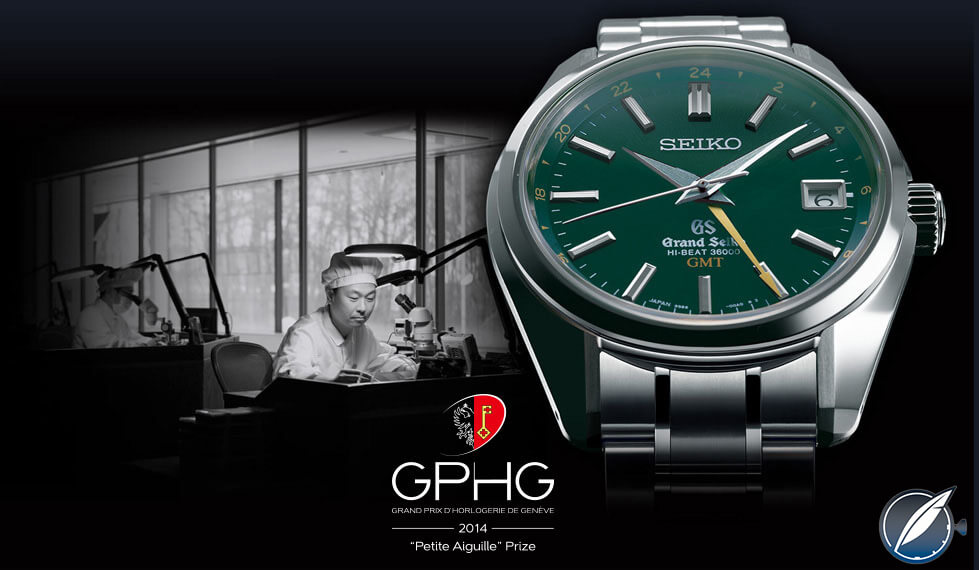
The Grand Seiko Hi-Beat 36000 GMT was awarded the Petite Aiguille prize for best watch under 8,000 Swiss francs by the jury of the 2014 Grand Prix d’Horlogerie de Genève
Though he is likely right in that, one thing was perhaps underestimated: the open-minded new constellation of the jury of the annual Swiss watch industry event that is the Grand Prix d’Horlogerie de Genève, which is often described as “the Oscars of watchmaking.” The Grand Seiko was recognized by an international jury comprising a number of recognized experts in vintage and modern watches, who awarded the Grand Seiko Hi-beat 36000 GMT Limited Edition (Reference SBGJ005) the Petite Aiguille prize. This is given to a watch whose retail price is under 8,000 Swiss francs (this model retails for CHF 7,750).
“Hats off to the jury for choosing the Grand Seiko Hi-Beat 36,000 GMT and showing that the competition really is international,” Ian said in the Quill & Pad round table following the GPHG.
Joshua had this to say, “The Grand Seiko Hi-Beat 36,000 GMT is probably the best watchmaking value in the competition at its price point, and it was also my choice as the winner. It definitely had some tough competition, but it does stand above the rest as a sublime piece of affordable high watchmaking affordable.” (For more on the 2014 Grand Prix d’Horlogerie de Genève, please see Reflections On The 2014 Grand Prix d’Horlogerie de Genève).
This particular Grand Seiko was introduced at Baselworld 2014. Its caliber boasts high accuracy of only +5 to -3 seconds’ deviation per day deviation thanks to its high frequency of 36,000 vph (5 Hz). This is well within the requirements for chronometer accuracy stipulated by the C.O.S.C. needed to receive official chronometer certification. The C.O.S.C., however, does not certify timepieces made outside Switzerland. Despite its high frequency and its second time zone display, this automatic watch boasts a power reserve of 55 hours. Unfortunately, though, it is a limited edition of just 600 pieces.
Changing perceptions
The Grand Seiko represents Seiko’s luxury line. “As such, it must be taken as an equivalent of the most famous lines of other, similar brands such as the Navitimer from Breitling, the Constellation from Omega, and at least the Oyster from Rolex,” Nardin justifiably argues. “Indeed, considering the very high level of Seiko in terms of research and development and how the brand continues to innovate in watchmaking, a comparison with Rolex is not out of question.”
However, as both Louis and I would both like to point out, models from the Grand Seiko line sell for less than half of the price of what a similar watch would cost if another (European) brand had produced it. “And for this reason, the Grand Seiko has become a serious, trendy, and welcome alternative,” he concludes.
Just after the 2014 edition of the GPHG ended, Ian also commented, “The Seiko Grand Seiko Hi-Beat 36000 GMT is probably the best value-for-money wristwatch on the market today.”
Quality, elegance, and style
When I asked Quill & Pad contributor Simon Cudd what he thinks of Grand Seiko, his reply was typical of a younger generation of European watch enthusiasts. “They look great. It is refreshing to see quality, elegance, and style outside of the Swiss, French, or German norm.”
And what he means by this is that the Grand Seiko line has a distinct style that is unlike European style, but also unlike the utilitarian style that the other Seiko lines generally project. “It is at once typically Japanese and yet unique to Seiko,” the company says of this aesthetic.
Indeed, its visuals reflect the restrained sense of beauty that Japanese culture values most highly (not unlike German culture in that respect): attention to detail and the pure essentials of watchmaking, which allow precision, durability, and legibility to shine through.
The cornerstone of what could be termed the “Grand Seiko style” is built upon the aesthetic Japanese consciousness of the beauty of light, which includes the subtle gradation of the infinite number of shades existing between light and dark. The radiance that a Grand Seiko case attains originates in this unique Japanese aesthetic consciousness, which is provided by polishing techniques that deliberately play with light reflection.
“Grand Seiko models have special designs, which embody the height of watch beauty from a Japanese point of view,” Nardin continues. “This difference distinguishes them from what is produced in Switzerland by all other luxury watch brands. The creative concepts are unusual – such as creating a limited edition with a green dial that reproduces the color of the forests surrounding the workshop of the Shizukuishi Watch Studio. And as for any Japanese item, every detail has a function that makes perfect sense. This high level of attention naturally captures the attention of watch aficionados.”
55th anniversary of Grand Seiko
“With the 55th anniversary of Grand Seiko, too, we have a special occasion to showcase both our heritage and our high technology with an important new collection,” Seiko CEO Shinji Hattori stated at Baselworld 2015.
The collection introduced at Baselworld 2015 in honor of the line’s 55th anniversary is a solid group of timepieces that is interesting in every way: the Grand Seiko 62GS is not only appealing, it is understated, attractive, and technically very interesting. In fact, this re-issued timepiece is almost entirely about subtleties that differentiate it from not only the originals half a century ago, but also most other timepieces released today: faceted, curved lugs, no bezel for a more open dial, and a highly understated visual that you either love or you don’t, but which is fully inspired by the line’s first automatic model from 1967.
The “Diashock” logo on the front (which refers to the futuristic name of Seiko’s own shock protection) and a lion emblem on the case back represent two elements that are completely faithful to the original edition.
At the same time it released the above-mentioned faithful reproductions, the Japanese manufacture also released two modernized renditions powered by the brand’s high-frequency movement, Caliber 9S85, which beats at 36,000 vph (5 Hz). Two more models run on Seiko’s own incredible Spring Drive technology within Caliber 9R65, which are housed in modern titanium cases. These are limited to 1000 pieces on a strap and 700 on a metal bracelet.
For more on the Grand Seiko, please visit www.grand-seiko.com. You can have your own private tour of the Seiko museum at www.museum.seiko.co.jp.
Quick Facts Grand Seiko 62GS
Case: 37.6 x 12.9 mm; white gold (Reference SBG091), yellow gold (Reference SBGR092), pink gold (Reference SBGR094)
Movement: automatic Seiko Caliber 9S65 with 72 hours power reserve
Functions: hours, minutes, seconds; date
Limitation: 100 pieces each in white gold, yellow gold, and pink gold
Price: $16,300 for yellow gold; $16,300 for pink gold; $17,200 for white gold
Note: parts of this story appear in Japanese in the July 2015 issue of Chronos Japan (© Simsum Media Co., Ltd), who kindly asked me to provide some opinions on how Grand Seiko is viewed in the west. For more information on that publication in Japanese, please visit www.webchronos.net.
*This article was first published on June 2, 2015 at Grand Seiko: Already Big In Japan And Getting Bigger Near You.
Leave a Reply
Want to join the discussion?Feel free to contribute!





















































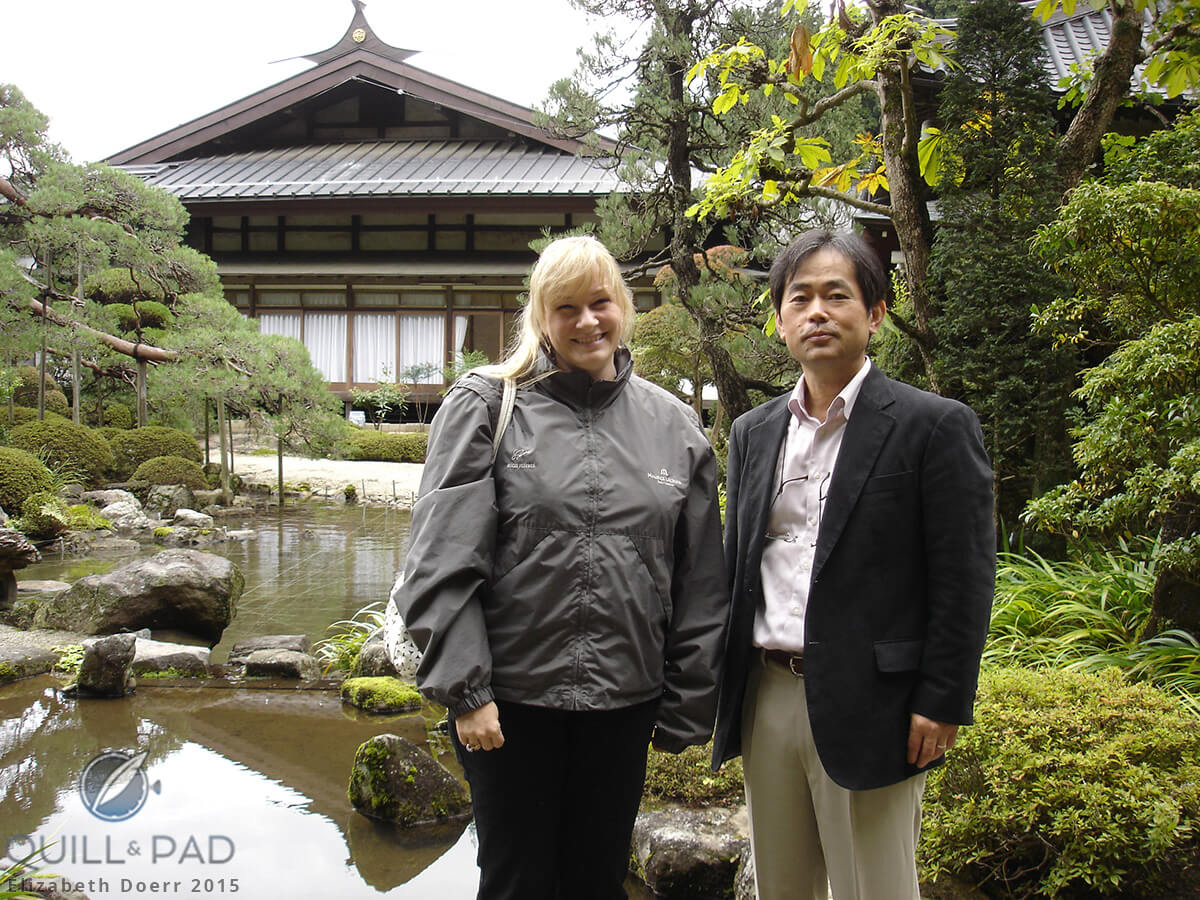

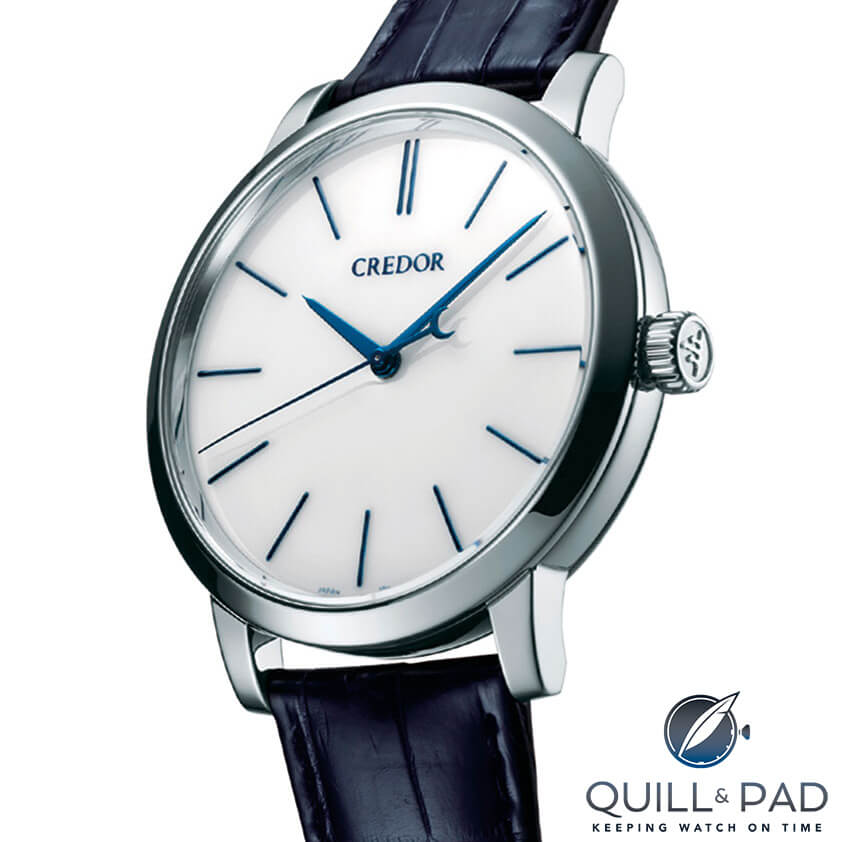
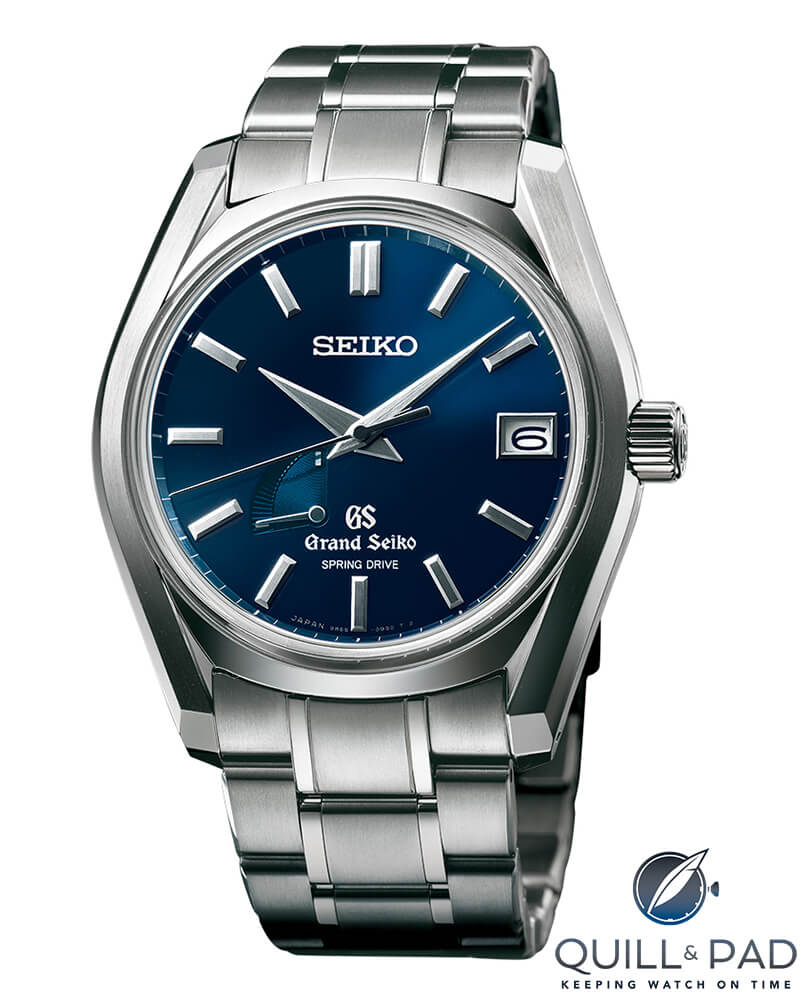
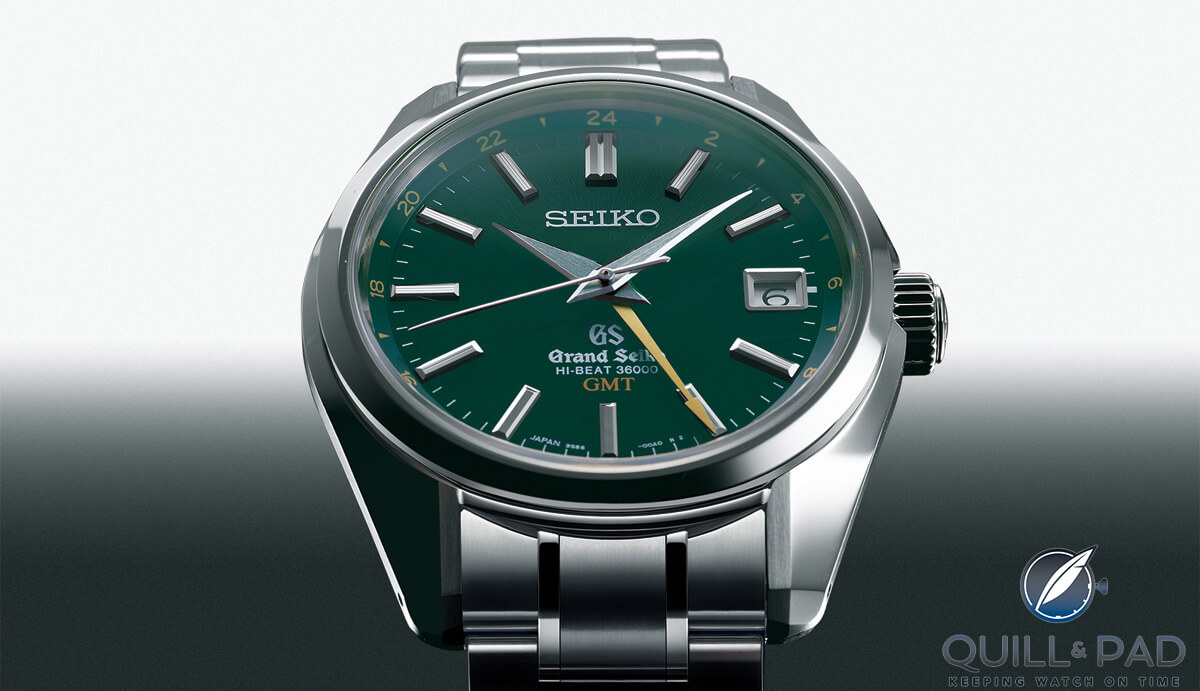

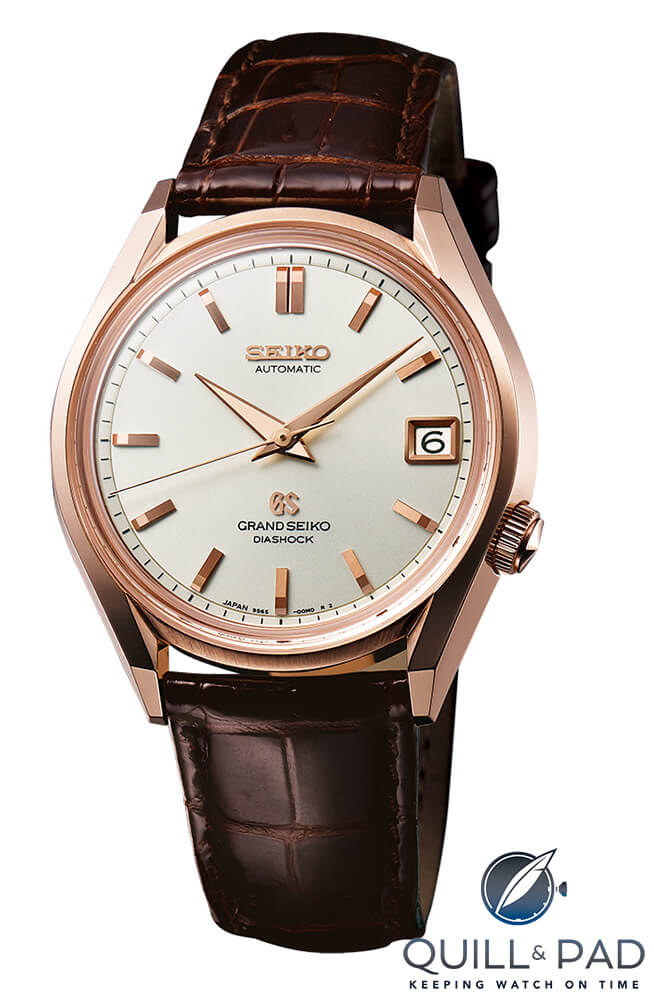
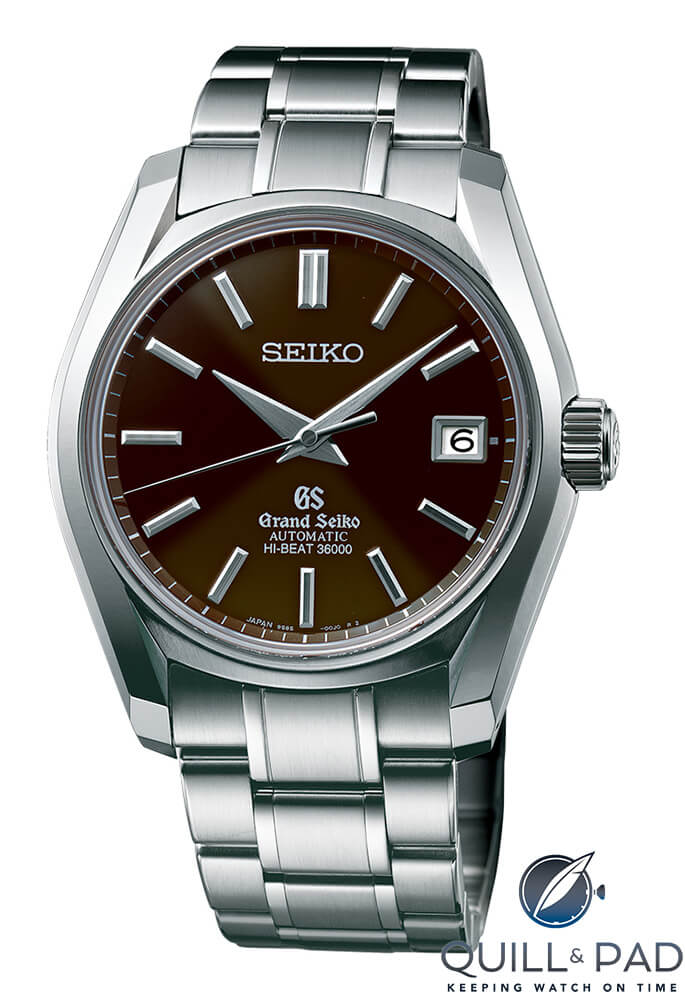
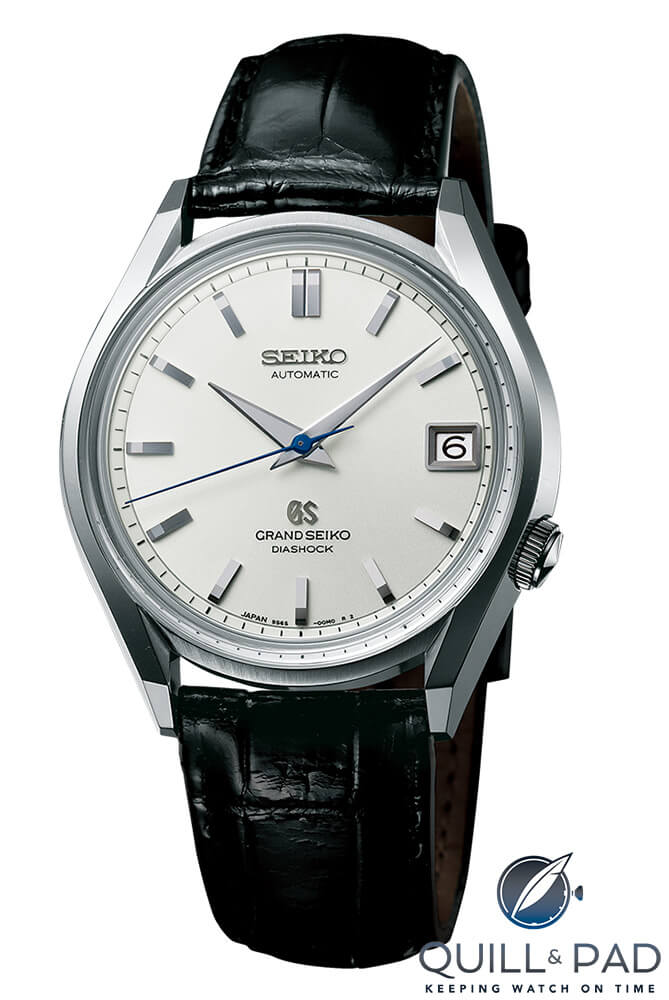
Boy, does Shiohara-San look pleased to meet you.
Thanks for this welcome story. It’s nice…no it’s most appropriate to recognize excellence regardless of place of providence.
I might add that just under the Grand Seiko line is the extremely affordable Presage line that was introduced to the U.S. last year. It is also a mechanical watch not with the elegant finishing of the GS but very well thought out and handsome. A very good starter watch. I just returned from my first trip to Japan yesterday and purchased the SPB041J1 for under $700. I tried to get in the U.S. but only a few made it and immediately sold out. I saw it in several Tokyo stores listing for 90,000 Yen ($785 U.S) and easily got it for under $700 U.S. I plan to give it to my son for his 16 birthday as I am having fun developing his collection of soon-to-be 3 affordable watches.
I predict Seiko will do very well in the U.S. as more Americans get used to the idea of owning a Seiko and see how the finishing is as good as the best European companies but for a much better value. Also, there is a watch for all price levels including the Presage, Grand Seiko, and the incredible Credor line (tried on the Eichi II last week- Wow!).
Look forward to seeing what Seiko will introduce at Basel 2017.
Now that’s a timely comment, William, as we will be featuring four Seiko Presage timepieces in today’s post.
Regards, Ian
And as a matter of fact here it is: 21 New Pre-Baselworld 2017 Watches.